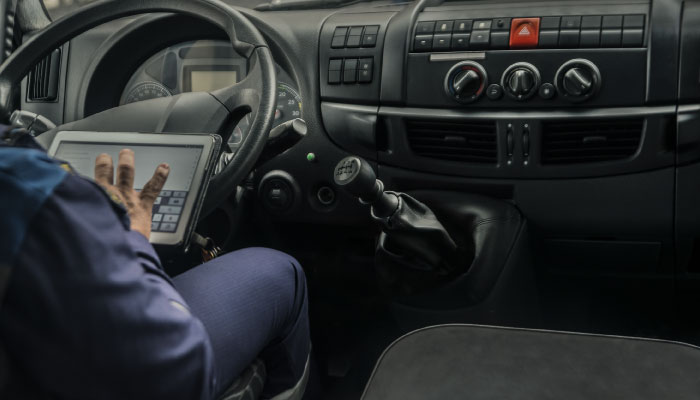Whether you are a small to medium sized trucking firm or a large carrier, you are subject to the  same standards and rules. The United States Department of Transportation Federal Motor Carrier Safety Regulations (FMCSR) apply to all trucking organizations equally.
same standards and rules. The United States Department of Transportation Federal Motor Carrier Safety Regulations (FMCSR) apply to all trucking organizations equally.
Large trucking companies may hire a full time safety individual to ensure compliance but small and medium sized companies cannot justify this expense. However, one infraction on a DOT audit can result in a huge fine. So how do you avoid those infractions and penalties? Hopefully, this blog can help. Some of the tips you need to keep in mind to stay compliant and ready for an audit are right here!
The first thing to remember is that a vehicle of gross vehicle weight rating (GVWR) or combined weight rating (GCWR) of more than 10,000 lbs is subject to the FMCSR, regardless of the industry the company belongs to, even if it isn’t a trucking company.
CRASH BOOM BOOM – ACCIDENT RECORDS
Always have an accident register or records as per the requirements of Section 390.15. The records need to detail the date and location of the accident, the driver’s name, any injuries or fatalities that occurred, whether hazardous waste was present and whether any hazardous waste or fuel spillage occurred.
HERE COMES THE ICE CREAM TRUCK (NO REALLY, PROPER IDENTIFICATION IS A MUST)
Remember how you could always tell when the ice cream truck came along because of the hideous, sticks-in-the-head song it kept playing? Just like that, you need to make sure your vehicle has the correct markings according to Section 390.21 of FMCSR.
DRUG AND ALCOHOL TESTING AND REQUIREMENTS
Carriers are required to conduct Drug and Alcohol testing as per FMCSR. Companies are often found lacking in this particular aspect during DOT Audits, so make sure you are up to speed and on top of things.
MOUNTAINS OF PAPERWORK? NOT REALLY, BUT DRIVER AND VEHICLE RECORDS ARE A MUST
- Now we come to paperwork. Maintain driver qualification files which include the driver’s work history, road test certifications, DOT physical certificates, among other things. Also, a good idea is to maintain a file for drivers, which includes logs recording hours of service, among other things. Violations of hours of service are a common occurrence so have the correct procedures in place to ensure drivers don’t exceed the legal limit.
- You also need to maintain a vehicle maintenance file containing records of all repairs, inspections and maintenance performed, along with details of the vehicle such as the company or license plate number, model and year, VIN, tire size etc. It’s a good idea to maintain records of road side inspections as well.
STAY ON TOP OF REGULATIONS AND DEVELOP SAFETY AND CONTIGENCY PLANS
- Stay on top of OOS criteria, FMCSA’s Compliance, Safety, Accountability (CSA) program and the Safety Management System (SMS) Methodology as well as your responsibilities under worker’s compensation.
- Develop and follow a hazardous materials security plan and provide follow up HIM training every 3 years.
- Have proper liability coverage according to Section 387.9 which contains a schedule of limits.
These tips should bring you closer to complying with the DOT compliance and standards regarding trucking companies.
For more detailed information, I would recommend Mark Dixon’s webinar for an expert opinion. Mark is an expert in safety and compliance, especially for small and medium sized companies wanting to ace the DOL audit, and has been in the transportation conferences.



